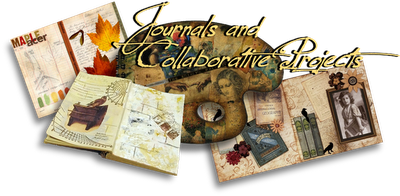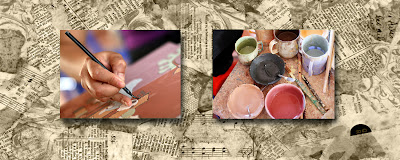By Debra Claxton
Paper Traders Moderator
Sometimes when I am happily (and mindlessly crafting) I lose awareness of color as an element of art. I forget that there are “formal” color schemes that can be applied to my work with awesome results. But I also know that within the “big wide world of color” there is a hitch: color schemes are the result of forced limitation. Using them requires me to eliminate some colors in favor of others. And even though I find it hard to restrict myself - I probably should embrace the color wheel and the theory behind it. Because, when formal color schemes are used effectively, I know they could make my work more exciting and interesting.
So, what are color “schemes”? Basically, they are “tried and true” combinations of colors that work together in a visually pleasing way. You might ask, “Well, isn’t that a little subjective?” The answer is Yes and No. There is a science to our perception of color and there are design courses devoted to visual color theory. But as a crafter, I need to simplify. So, here are a few formal “color schemes” to consider. They are based on the traditional color wheel and are often applied with great success! The subjective part of using color schemes emerges with your personal choice of light/dark and bright/dull; plus the addition of neutrals (gray, tan, brown, black).
Complementary Colors: To begin, look at a 12 part color wheel. Choose a color, (say blue) and travel directly across the wheel/chart (as if dividing it in half). You will see that orange is the opposite color - which is the “complementary” color. Complementary colors make each other look fabulous when they are next to each other in art (For example, if you have a purple image try placing it on a yellow-toned background.) Any two colors across from each other on the wheel are a winning combination (in various tones & shades of the two).
 |
| Van Gogh’s painting, Siesta, 1889 shows the use of color complements. |
Split Complementary Colors: Choose a first color (say red-violet), and then add the two colors on either side of your first color’s complement. The complement of red-violet is yellow-green. So (along with red-violet) you would use green and yellow, because they are on either side of yellow-green.
 |
Split complementary colors in
nature.
|
Triad Colors: Three colors spaced an equal distance around the color wheel. So, on a wheel of 12 colors each chosen triad has three other colors in-between. Example: Blue-Violet; Yellow-Green; and Red-Orange are triads - a winning combination! All triads are visually effective.
 |
| Basic red, yellow & blue are triads, which have been used in this ATC. |
Analogous Colors: This color scheme uses three to four colors that sit next to each other around the outside of the color wheel - like friends sitting around a table. They share a visual likeness and a commonality. Many of the “Blues” cards from our recent ATC swap were analogous because the range of colors on any one card may have included blue-violet, regular blue and blue-green tones.
 |
| This postage stamp ATC uses violet, blue-violet, regular blue, and a light blue-green; so it could be considered an analogous color scheme. |
Monochromatic Color: An artwork composed of one color done in various light and dark tones.
 |
| sample of a monochromatic scale |
So, does every project have to have a color scheme? Must we always think about color in this way? Well, no one can say that you must apply this information to your work, but it is good to know that most professional artists do. The use of color schemes can give your work visual harmony; which leads to visual appeal. So remind yourself as often as possible to make conscious color choices. The following acronym may be a helpful reference when you begin a new project:
C - Choose a color scheme to get started (stray later if needed)
O - Organize your color elements (collect images/papers/trims in your color scheme)
L - Let others inspire you (research images of art in your color scheme & theme)
O - Only add neutrals (gray, tan, brown, black) as extra “colors” in your project
R - Review with a critical eye (before gluing!)
There are many websites that expand on this basic information which can further enhance your experimentation with color. Just don’t forget to remember how important it is to keep COLOR in the forefront of your crafting activities. You can’t break the rules unless you know what they are! But once you do, feel free to break them with purpose and individuality.
Note: Watch for a follow-up to this article that will discuss the value and intensity of color, and how to manipulate paint colors for use in paper crafting.










1 comment:
We DO forget the basics quite often.. Great post!
Post a Comment